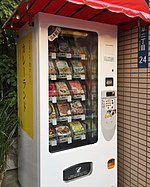automated
 These days, automation is commonplace. We have apps on our phones that can handle our payments at the register, and even let us skip the register and pay as we walk out the door. We have apps for home security, and even to turn things on and off from miles away. All that seems so normal to us these days, but imagine this kind of thing in 1956. I know that it sounds bizarre, but someone did think of a form of automation, even if it would seem primitive these days.
These days, automation is commonplace. We have apps on our phones that can handle our payments at the register, and even let us skip the register and pay as we walk out the door. We have apps for home security, and even to turn things on and off from miles away. All that seems so normal to us these days, but imagine this kind of thing in 1956. I know that it sounds bizarre, but someone did think of a form of automation, even if it would seem primitive these days.
On July 19, 1956, a model named Joan Lockwood selected items from a glass case at a completely automated section of a supermarket at the 30th Annual IGA Food Store Convention at the Waldorf-Astoria in New York. She put a large round “key” in a matching slot while she pressed buttons to make her selection. The items she selected were recorded on a tape inside the key. The machine tabulated the amount due on the purchases at the same time. It was just one of the systems that was proposed for supermarkets. The plan was to implement the system in the fall of 1956 in key  US cities. The three types of automation would be push-button selection in the store, checking of items on special cards at home or in the store, for electronic delivery by conveyor belt to the counter, and after-hours and Sunday automatic shopping of limited last minute supplies at coin machine units outside stores.
US cities. The three types of automation would be push-button selection in the store, checking of items on special cards at home or in the store, for electronic delivery by conveyor belt to the counter, and after-hours and Sunday automatic shopping of limited last minute supplies at coin machine units outside stores.
The shopping method that IGA Food Stores envisioned didn’t really seem plausible, and for an entire store, but then these days you can order online and pick up your order at Walmart, or have Target deliver it to you. I’m sure that wasn’t exactly what IGA had in mind with there system, and indeed it wasn’t what came of it at that time, but it did start the ball rolling for a type of shopping that we all take for granted these days…the vending machine. Of course, the vending machine can’t distribute everything, but it has gotten to the point of even being able to distribute foods that must be kept cold. It’s a very different type of vending machine than the old IGA machine, but it is most likely the brainchild of that old IGA system.

